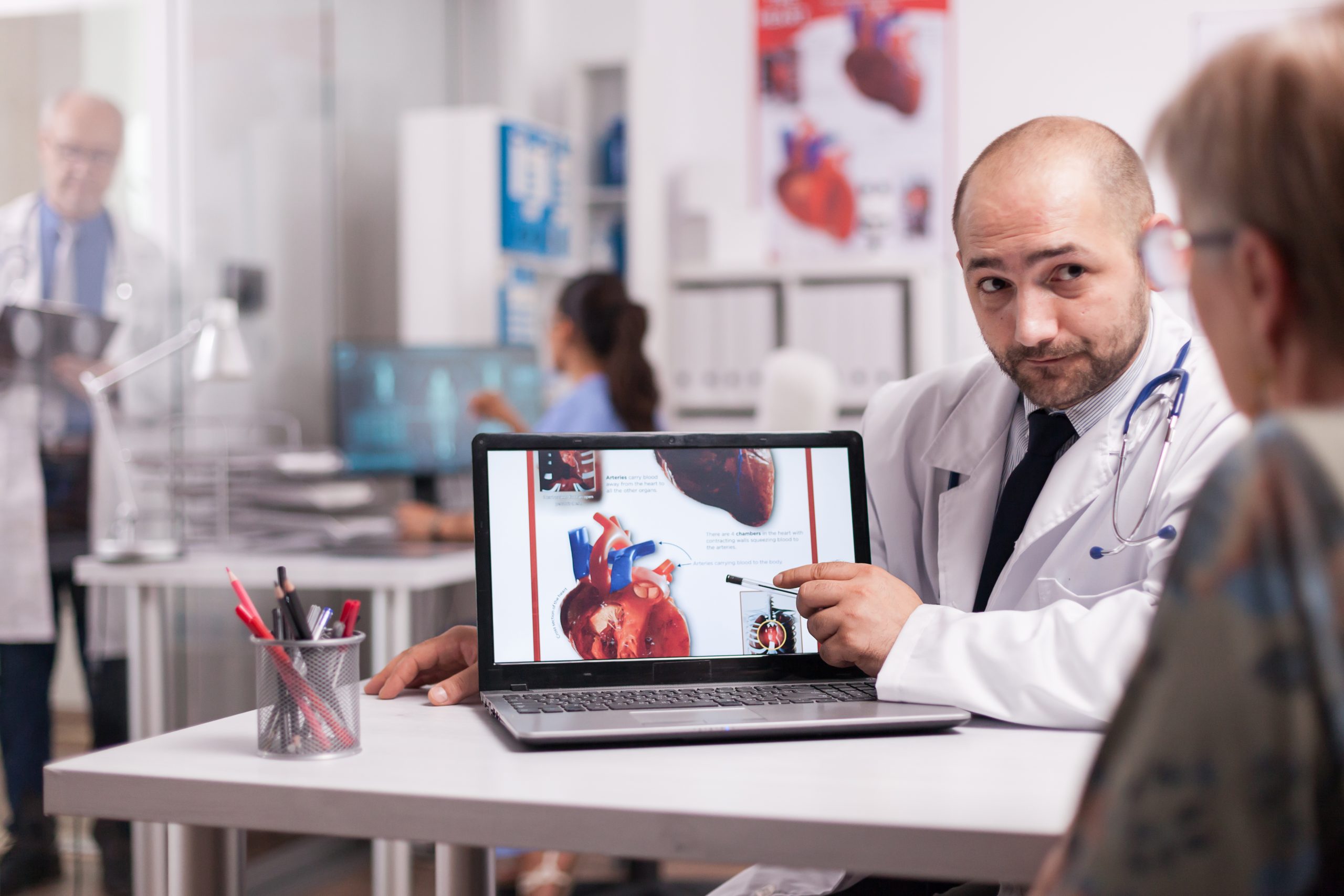Every 40 seconds, someone in the USA has a heart attack.
Heart disease is the leading cause of death in America and claims nearly 650,000 people each year, making it responsible for 1 in 4 deaths.
Knowing what heart attacks are, what causes them, and how to recognize the symptoms of a heart attack may save someone’s life. Possibly, your own.
What Is a Heart Attack?
Heart attacks happen when blood flow to the heart is interrupted.
Most people who experience heart attacks have Coronary Artery Disease, which causes arteries to harden and narrow over time, eventually constricting blood flow entirely.
Typically, a blockage comes from accumulated cholesterol and fat form a plaque in the heart’s arteries, impeding blood flow to and from the heart. If too much of this plaque grows, it will damage arteries or rupture, causing some of the plaque to block blood flow entirely.
What Causes It?
When a coronary artery becomes blocked, it results in a heart attack (also called a myocardial infarction).
Risk factors for heart attack include:
- Obesity
- Age
- Gender
- High cholesterol levels
- Diet
- Diabetes
- Genetics
- Smoking
- Hypertension
- Previous heart attack
- Heart surgery
- Stress
Why Do Women Have So Many Heart Attacks?
Heart disease is the number one cause of death for women and claims six times more women than breast cancer does.
Researchers have posited several reasons for why this is the case. While there’s no one simple answer as to why women seem to suffer heart attacks so frequently, they have posited a few reasons:
Different Symptoms
When you imagine “heart attack,” do you picture someone gripping their chest or left arm? While this is how many men experience a heart attack, only 1 in 8 women reported feeling chest pain as part of their heart attack. Women are likely to experience other symptoms, such as shortness of breath, or describe the sensation as feeling pressure or a squeezing sensation.
Pain in the back, neck, jaw, and arms is another common symptom many women report, as well as fatigue, nausea, vomiting, and fainting.
It Starts with the Heart
Women have lighter coronary arteries, which makes procedures such as coronary bypass surgery and angiography more challenging. The difficulty of performing successful heart surgery means that women have a reduced chance of surviving heart surgery than their male counterparts.
Age Plays a Role
The likelihood of dying by heart disease increases in women over 65.
Before menopause, high estrogen levels help protect women from heart disease by increasing good cholesterol and lowering bad cholesterol. However, post-menopausal women have more cholesterol than men, plus higher triglyceride levels, which contribute to heart disease risk.
Diabetes Doubles Repeat Attack Risks
Women with diabetes are at a much higher risk for heart attacks than diabetic men.
A possible reason for this is because many women with diabetes also have additional risk factors, like hypertension, obesity, and high cholesterol. For women who have already suffered a heart attack, diabetes doubles the chance of a second heart attack or heart failure.
Regardless of gender, it’s crucial to recognize the signs of distress that indicate someone is suffering from a heart attack.
How to Tell if Someone is Having a Heart Attack
Many people experience heart attacks differently, and not all heart attack sufferers will exhibit all these symptoms. However, the following is a general list of symptoms commonly associated with a heart attack:
- Chest pain, squeezing, or pressure. The discomfort may spread to the jaw and down the arms, particularly on the left side of the body.
- The skin may look suddenly gray and sweaty.
- Discomfort in the upper abdomen, which may feel like indigestion at first.
- Difficulty breathing or shortness of breath.
- Sudden dizziness or nausea, vomiting.
- The victim may collapse or lose consciousness.
What Should You Do?
Unless you are a trained medical professional, the best thing you can do is stay calm and call for emergency help. Dial 9-1-1 and wait with the victim until help arrives.
- Chew and swallow an aspirin, if the victim is not allergic to it.
- Administer nitroglycerin, only if a doctor has prescribed it.
- Perform CPR if the victim is unconscious. If you do not have CPR training, perform consistent chest compressions at a rate of 100-120 per minute.
- If there is an Automated External Defibrillator nearby, use it!
Do not try to drive the victim to the hospital, and do not try to drive yourself if you suspect you are having a heart attack. Call 911 and wait for help.
If you suspect someone is having a heart attack, go to a hospital.
If you suspect you may be at risk for heart disease or have been experiencing symptoms, like occasional shortness of breath, chest discomfort, or unexplained nausea and dizziness, you should seek non-emergency medical attention.
Contact us today to schedule an appointment or book a Virtual Visit and consult a trained physician from the comfort of your home.




